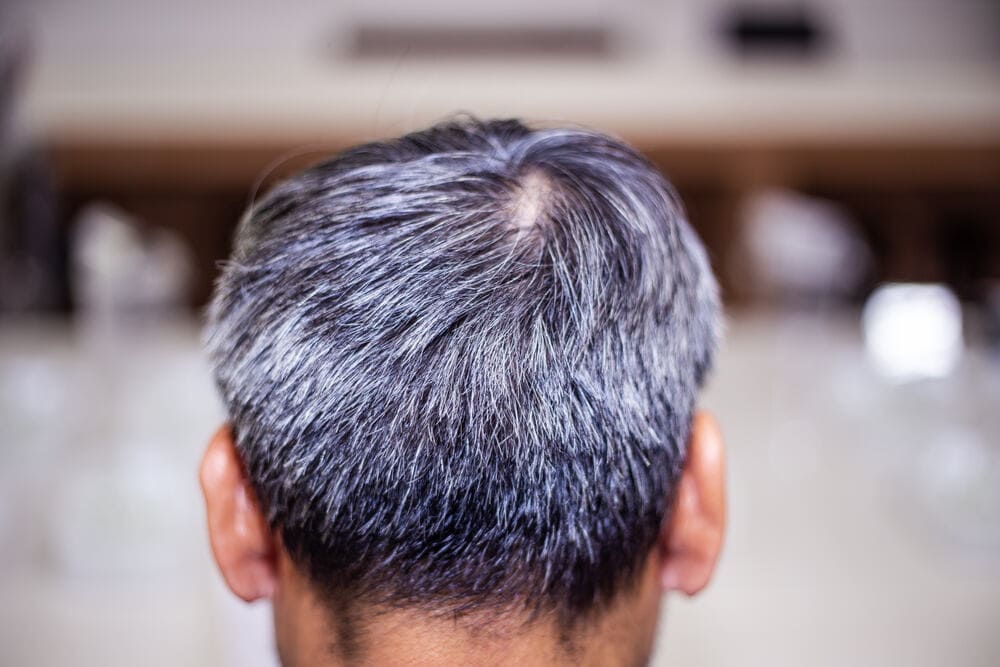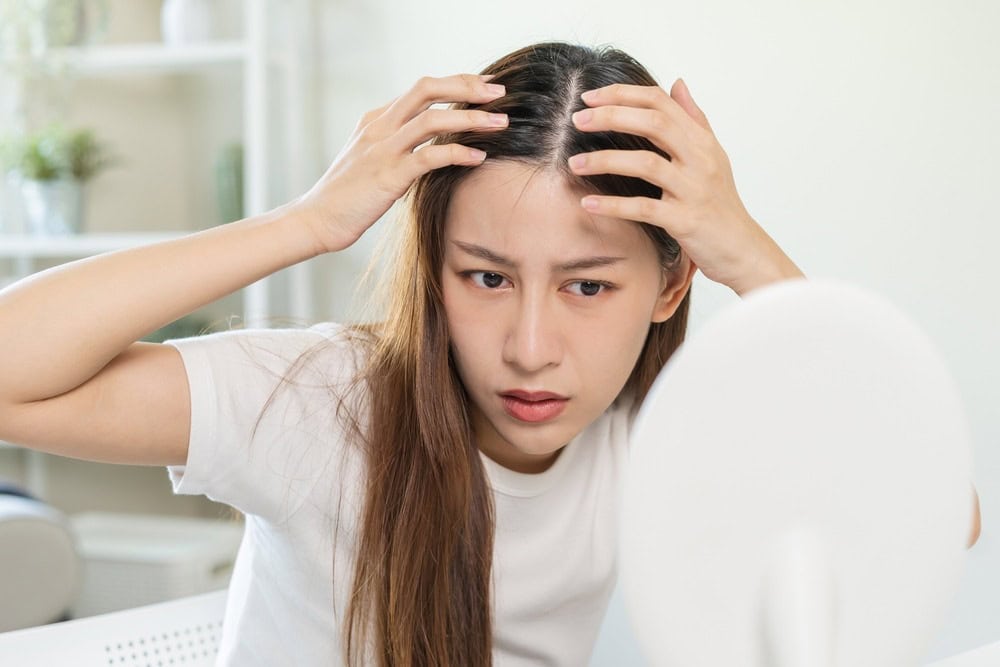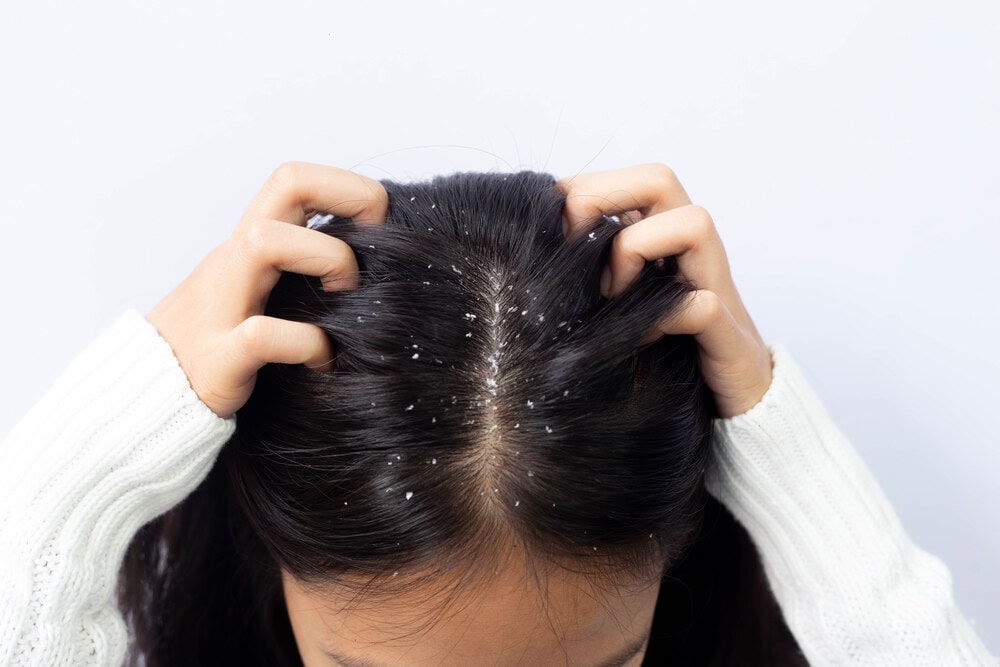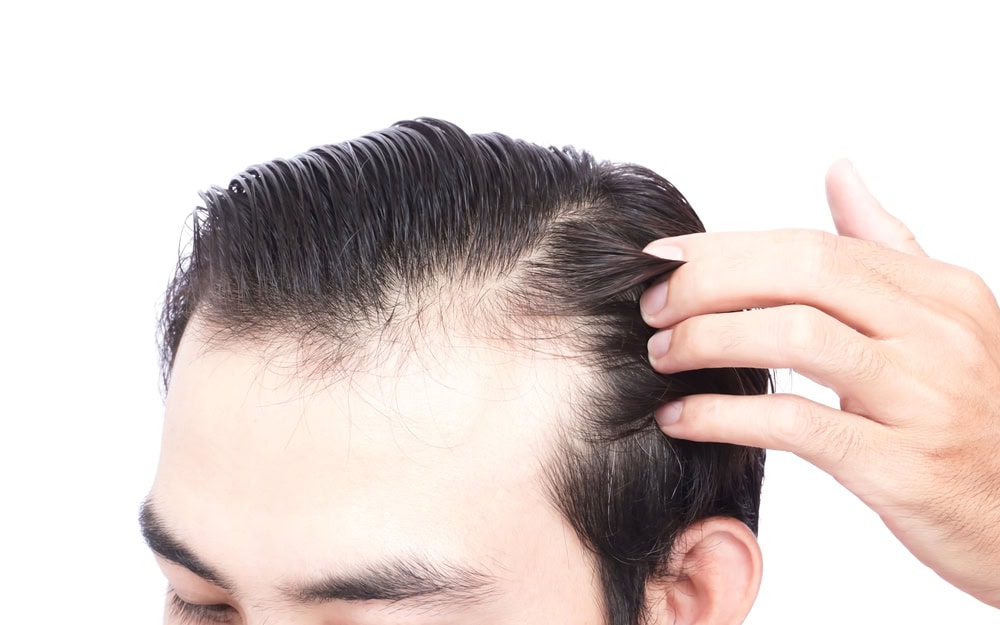The older you get, or the more stressed you are, and the more likely men are to have “hair problems”, whether it’s oily hair, hair loss, thinning hair, or other problems. We believe that there must be so many men worrying about this problem. Therefore, this article will be a guide for all men, about the six most common hair problems for men. This article will explain the problems, and wrap up with effective treatment methods. Please continue reading!
Baldness and wide forehead
Baldness is one of the most common hair problems for men. It occurs in about 50% of men aged 50 and over and about 80% when they are 80 and over. It can be caused by a variety of factors, as follows:
- Genetics: The most common cause of male baldness is genetics. The genes that control hair growth become abnormal, causing hair to fall out faster than normal, and new hair to grow thinner.
- Age: As you grow older, the body will produce more DHT (male hormone), which will inhibit hair growth.
- Certain diseases and medications: For example, thyroid dysfunction, Cushing’s disease, Addison’s disease, and the use of certain medications, such as chemotherapy, high blood pressure medications, and antidepressants, can also cause hair loss.
There are two main approaches to treating baldness:
- Hair transplantation, which has many methods, such as FUE (Follicular Unit Extraction) or FUT (Follicular Unit Transplantation).
- Medications such as Minoxidil and Finasteride, which must be prescribed by a specialist.
Thinning hair
Thinning hair is another common hair problem in men, which can significantly affect confidence and appearance. The main cause is genetics, accounting for about 95% of men with hair loss. It is caused by abnormal genes, causing hair to grow shorter and have a shorter lifespan, resulting in more hair loss.
Symptoms of genetic-induced hair loss usually start at the age of 20-30 years. The common characteristic is hair loss at the temples and forehead. So the hairline resembles the “M” or “U” in the middle of the head, causing the hair to gradually thin until the person eventually becomes bald.
However, there’s no need to panic, because this problem still has a solution, such as:
- Medication: Currently there are medicines used to treat genetic hair loss such as Finasteride and Minoxidil, which will alleviate hair loss and stimulate the growth of new hair.
- Hair transplant: Hair transplant is another effective method for treating hair loss. Hair transplantation can be done in many ways, such as FUE or FUT.
- Other treatments include injecting concentrated platelets, Exosome injections, etc., or laser hair root stimulation (LLLT).
Gray hair
It is normal that when we get older, the hair that was once thick and black will start to turn gray, and eventually white. This is what everyone knows as “gray hair”. The reason is over time, the body produces less melanin in the hair, causing the hair color to fade. In addition, there are many other causes of gray hair in men as well, as follows:
- Genetics: If you have a family history of premature gray hair, you may also be more likely to experience premature graying.
- Stress: Stress can affect many bodily functions, including the production of hair pigments. Therefore, being under stress for a long time can lead to premature graying.
- Nutrient deficiencies: Such as vitamin B12, vitamin C, iron, and zinc.
- Certain diseases: Such as thyroid disease, diabetes, anemia, and liver disease.
Although there is currently no permanent cure for gray hair, there are ways to delay the onset of hair graying. These include:
- Hair dyeing: This is the easiest and fastest way to cover up the gray hair. However, frequent hair dyeing can instead dry out and damage the hair.
- Using hair care products: Some hair care products may help slow down the onset of gray hair, such as products containing biotin, green tea extract, and ginkgo biloba extract.
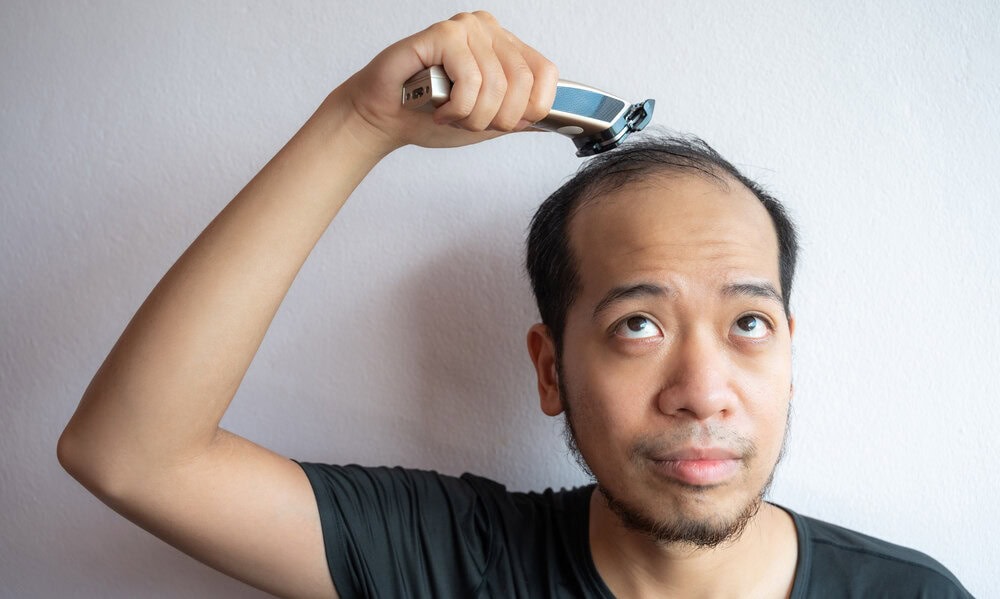
Oily hair
Oily hair is another problem that is just as annoying as thinning hair. However, the causes are different. Oily hair is caused by the sebaceous glands in the scalp producing too much oil. Although these oils act to protect the scalp from losing moisture, excessive production can make the hair look shiny. Sticky. Factors that cause excessive oil secretion include:
- Genetics
- Testosterone
- Hot and humid weather
- Using hair styling products that contain oil
- Washing your hair too little or too often
Although the problem of oily hair is not serious, if left for a long time, it can lead to bigger problems with men’s hair, especially hair loss. Therefore, to reduce oiliness on the hair, you can follow the guidelines below.
- It is recommended to wash your hair at most once a day.
- Choose shampoo and conditioner that are made for oily hair.
- Avoid using hair styling products that contain oil.
Dandruff
Lastly, the problem of men’s hair that we believe no gentleman wants to encounter. Because in addition to being annoying, it also makes your image look negative. That is “dandruff”. The cause of dandruff is the fungus Malassezia Globosa, which lives on the scalp of all of us. This type of fungus helps digest the oil on the scalp, creating oleic acid, which can stimulate inflammation and cause the top layer of skin cells to shed earlier.
The solutions to alleviate dandruff problems are as follows:
- Using anti-dandruff shampoos that contain antifungal ingredients such as ketoconazole, selenium sulfide, or pyrimethazone monoamine
- Adjusting hair care habits, such as washing your hair at least once a day, avoiding washing your hair with excessively hot water, and avoiding heat-treating the hair.
Solve all men’s hair problems at MAX HAIR CLINIC
Although there are many hair problems that men have to face, if there is a correct treatment, it is not as worrisome as you think. You can consult at MAX HAIR CLINIC, a full-service hair clinic, cared for and treated by experienced specialist doctors with world-class specialized techniques. The clinic is ready to advise on how to solve hair loss, as trusted by many service recipients, including many celebrities. You can make an appointment for a consultation or receive a hair problem assessment for free, no charge, at all 8 Max Hair branches nationwide or contact via Line Official @maxhair

